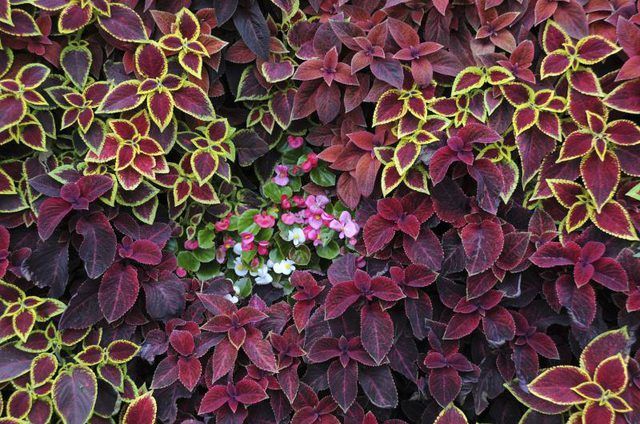Bulbs
Flower Basics
Flower Beds & Specialty Gardens
Flower Garden
Garden Furniture
Garden Gnomes
Garden Seeds
Garden Sheds
Garden Statues
Garden Tools & Supplies
Gardening Basics
Green & Organic
Groundcovers & Vines
Growing Annuals
Growing Basil
Growing Beans
Growing Berries
Growing Blueberries
Growing Cactus
Growing Corn
Growing Cotton
Growing Edibles
Growing Flowers
Growing Garlic
Growing Grapes
Growing Grass
Growing Herbs
Growing Jasmine
Growing Mint
Growing Mushrooms
Orchids
Growing Peanuts
Growing Perennials
Growing Plants
Growing Rosemary
Growing Roses
Growing Strawberries
Growing Sunflowers
Growing Thyme
Growing Tomatoes
Growing Tulips
Growing Vegetables
Herb Basics
Herb Garden
Indoor Growing
Landscaping Basics
Landscaping Patios
Landscaping Plants
Landscaping Shrubs
Landscaping Trees
Landscaping Walks & Pathways
Lawn Basics
Lawn Maintenance
Lawn Mowers
Lawn Ornaments
Lawn Planting
Lawn Tools
Outdoor Growing
Overall Landscape Planning
Pests, Weeds & Problems
Plant Basics
Rock Garden
Rose Garden
Shrubs
Soil
Specialty Gardens
Trees
Vegetable Garden
Yard Maintenance
Plant Care for Kong Coleus
Plant Care for Kong Coleus. When Victorian gardeners developed a passion for the shade-loving coleus (Plectranthus scutellarioides, Solenostemon scutellarioides) plant, they had no idea their efforts would eventually unleash monsters. Well more than a century later, Kong coleus (Solenostemon scutellarioides “Kong Series”) arrived on the...

When Victorian gardeners developed a passion for the shade-loving coleus (Plectranthus scutellarioides, Solenostemon scutellarioides) plant, they had no idea their efforts would eventually unleash monsters. Well more than a century later, Kong coleus (Solenostemon scutellarioides "Kong Series") arrived on the scene with hand-sized leaves in a dizzying choice red, pink and green combinations. With shade and organically rich, well-drained soil, Kong coleus is an easy-care plant.
Fertilize for Foliage
Before planting Kong, amend nutrient-poor or slowly draining soil by working a 2-to 4-inch layer of well-aged organic compost into its top 6 to 10 inches. Then scatter 2 1/4 teaspoons, or the brand label's recommended amount, of granulated 12-6-6 fertilizer over each square foot of soil and water it in. The high-nitrogen fertilizer promotes lush, vivid leaves.
Even rich, well-draining soil benefits from a pre-planting application of the fertilizer. Fertilize all soil types the same rate monthly through the growing season.
Water When Wilting
Although Kong cuttings root quite happily in water, in-ground plants are different. Soggy soil exposes them to root rot. When Kong needs water, its leaves droop.
Monitor prolonged dry spells and water when wilting begins. Like most annuals, Kong does well with 1 inch of rain or supplemental water per week. During drought, this amounts to about 6 gallons of water per 10 square feet of soil.
Water slowly and deeply around the base of the plant so the moisture penetrates to the roots without wetting the foliage. Watering in the morning lets dry before nightfall so they don't attract fungal disease.
A rain gauge helps prevent overwatering. Position it near the Kong plants and check at the end of each week. If the amount of water in it measures less than 1 inch, water enough to make up the difference. For example, if the weekly rainfall measures 1/2 inch, give the coleus an additional 3 gallons of water for each 10 square feet of soil.
Mulch for Moisture Retention
Spread a 2- to 3-inch layer of organic mulch, such as compost or bark chips, around Kong coleus at planting to retain soil moisture and discourage weeds.
Spread mulch evenly over the planting bed, leaving a 1-inch radius around the base of each plant clear. Expect 80 pounds of mulch to cover 10 square feet of soil with a 3-inch layer.
Prune for Density
For a denser, smaller-leaved Kong, snip the young growing tips off periodically with clean, sharp hand pruners. Make each cut just above a leaf bud, where new leaves sprout, followed by more branches. To avoid spreading disease, *rinse the pruners in rubbing alcohol between cuts and after you finish.
Encourage new leaves through the growing season by removing Kong's flower spikes as soon as they appear. Otherwise, the plant diverts energy from foliage production into blooming and setting seed. Pinch off the flower stalks at their bases between your thumb and forefinger.
Watch for Pests
Sap-draining aphid and mealybug insects occasionally infest Kong plants. Aphids feed as large colonies on the stems and backs of the leaves. From a distance, white mealybugs look like tiny tufts of cotton. Both pests release gooey, clear excrement called honeydew that may lure ants to the plants. Wash small pest populations off with a hose sprayer attachment set to sharp spray. Repeat every two or three days until the problem subsides.
Manage severe infestations with ready-to-use insecticidal soap. When the temperature is below 90 degrees Fahrenheit and no rain or heavy winds are in the 24-hour forecast, spray the plants until all their surfaces drip with the soap. Repeat the treatment weekly, or as often as the label recommends, to control the pests. Follow all the label's instruction and wear protective clothing, waterproof gloves, safety goggles and a respiratory mask when working with insecticides.